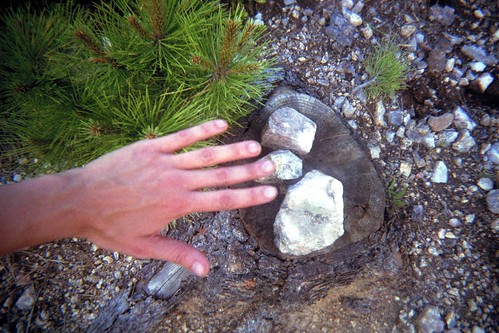Sara Caron
I grew up in a big city with so many places to tour, but the sights, the museums and landmarks, were easy to forget about in the confines of my own neighborhood.
I remember the crumbling stone wall around Rosehill cemetery, watching as it was repaired, a few hundred feet at a time with new wrought iron. Anyone but a local might have mistaken the push for pull, what was advancing along Peterson Ave. - the old concrete or the new black fencing, whether something was being hidden or exposed.
And I’ve never been to the Sears Tower, actually, I think they might have changed the name and I think it might be expensive to get up there. But I have been to Ardmore Beach at all times of day and night, in every season, and as soon as we step out the front door my grandmother can tell, from the direction of the wind, whether it’s going to be a “big wave day”.
When I moved to Milwaukee, I travelled by bike. I developed an intimacy with the topography of the landscape, what routes you’d want to carry groceries home along, the few ways to avoid hills. The first time I stepped off the train I may have had the wide, upward gaze and halting steps of a tourist, but that mystery passed quickly. I dedicated myself to living here. I learned how spaces can change from names and points on a map to real, familiar places.
Two years ago I finally got my driver’s license. I started taking road trips. I finally felt like a tourist. A little afraid, I saw landscapes I never imagined, it got darker out than I thought it could. I was ready to see the unfamiliar, disappointed by strip malls, chain stores and hot expanses of freeway. I got so bored, and took distractions readily. I lingered in National Park info stations, gift shops, restaurants. I took detours off the highway to places like “The Thing” in Benson, Arizona, “Petrified Gardens” in Kadoka, South Dakota, Wall Drug, Hemingway’s House in Key West, Fallingwater in Pennsylvania, the Corn Palace. Even in the natural spaces, I noticed, some trails were designed better than others, some parks had better times to visit, curious dissonance can happen when the architecture of the gift shop is designed to mimic the architecture of the site.
The lack of my familiar environment made me susceptible to tourism. I was looking for landmarks, something to break up the trip. Signage, as leaflets at highway rest stops, or cairns and blazes along back country trails, led me through the landscape. I began to see similarities between the vocabulary of high volume national landmarks and roadside DIY attractions.
I found myself following maps, arriving at the appointed time for docent-guided tours. The strategies and language of tourist sites are all about guidance. Sometimes it’s literally a path carved into the earth, sometimes a voice over a loudspeaker, a map, billboards urging you ahead, just a little farther, not too far off the freeway. In a way that doesn’t happen when you’re at home, a tourist gives themselves over to coercion. The tourist needs a guide.
I want to explore Lynden as a public site from the perspective of a tourist and a guide. With ongoing projects, I will invite other artists to participate and collaborate with me in developing guides through the park, interpretive hiking guides, sculptural cairns, signage, and tours. Together, the artists and audience will explore the known and unknown of the garden and find new ways of navigating it.

